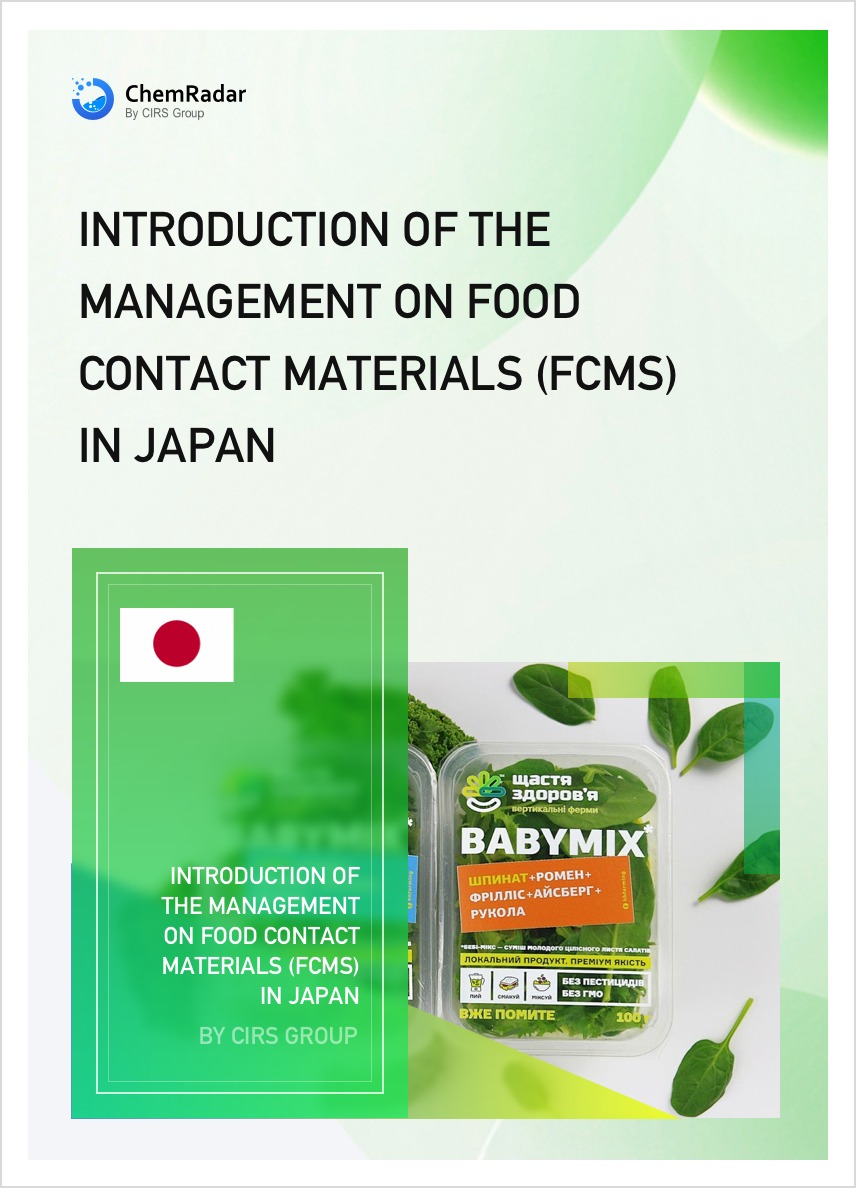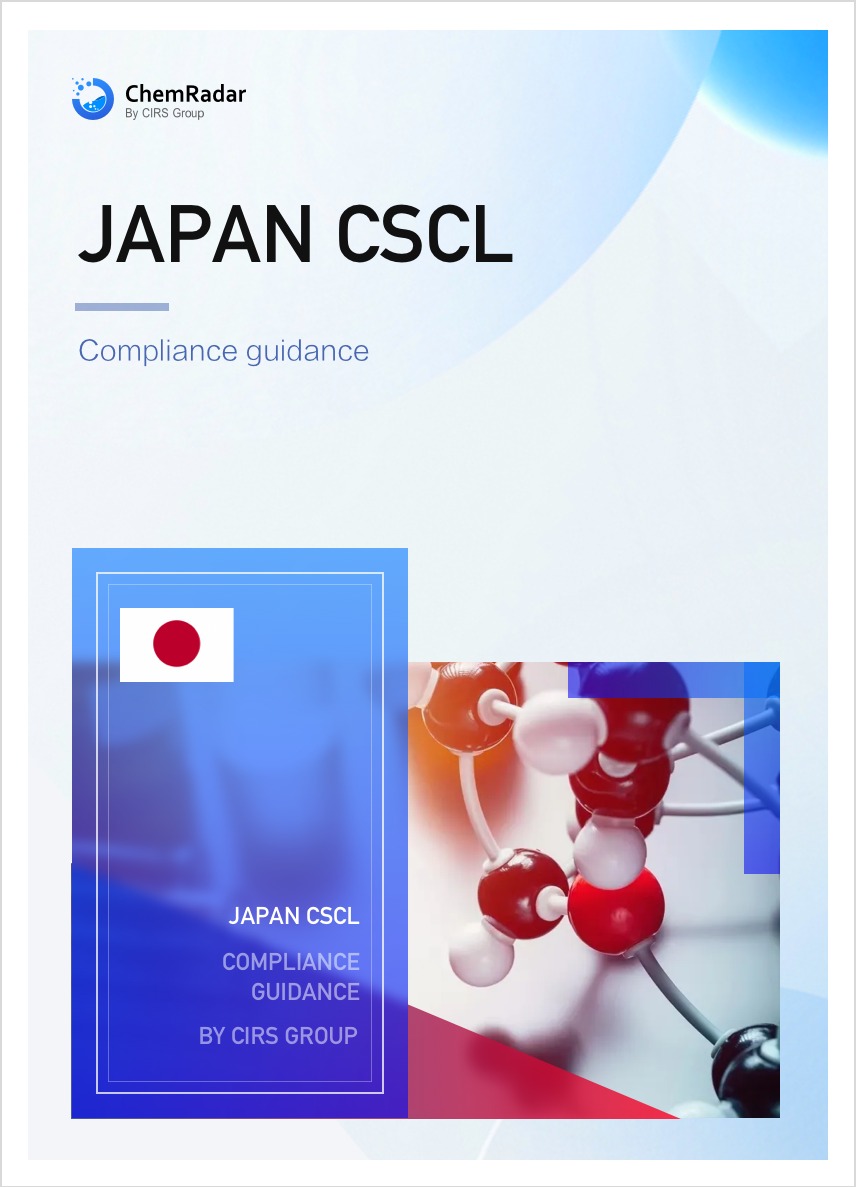On August 20, 2025, Japan's Ministry of Health, Labour and Welfare (MHLW), Ministry of Economy, Trade and Industry (METI), and Ministry of the Environment (MOE) jointly released a draft amendment to the Enforcement Regulations of the Chemical Substances Control Law (CSCL) based on the CSCL, and are soliciting public comments. According to the announcement, the public may submit opinions or suggestions via the methods described on the official website until September 19, 2025.
Main Revisions
Regarding Article 1
- Expanded Scope and Handling Methods for Impurities
Regulations concerning the treatment of impurities in Class I Specified Chemical Substances, originally applicable only to such substances present as by-products in trace amounts in other chemicals, are now extended to include cases where they exist as impurities.
Current regulation: When a Class I Specified Chemical Substance is present as a by-product in trace amounts in another chemical substance, and it is determined that the by-product will not harm human health or impede the habitat and growth of flora and fauna through environmental pollution, and its concentration has been reduced to technically and economically feasible levels, the by-product is not treated as a Class I Specified Chemical Substance.
The amended proposal states: When a Class I Specified Chemical Substance is present as an impurity in trace amounts in another chemical substance, and it is determined that the impurity will not harm human health or impede the habitat and growth of flora and fauna through environmental pollution, and its concentration has been reduced to technically and economically feasible levels, the impurity is not treated as a Class I Specified Chemical Substance.
Furthermore, a subsequent provision in Article 2 supplements the handling of such impurities: When the content of a Class II Specified Chemical Substance, Monitoring Chemical Substance, Priority Assessment Chemical Substance, or New Chemical Substance present as an impurity in another chemical substance is below 1%, the regulations corresponding to Class II Specified Chemical Substances, Monitoring Chemical Substances, Priority Assessment Chemical Substances, and New Chemical Substances do not apply.
Additionally, when the content of a General Chemical Substance present as an impurity in another chemical substance is below 10%, the regulations for General Chemical Substances do not apply.
Regarding Article 2
- Addition of the Meaning of Existing Chemical Substances, etc.
Existing Chemical Substances, etc. refer to chemical substances specified in Paragraph 3, 4, 5, or 7 of Article 2 of the Law; chemical substances confirmed under Item 5 or 6 of Paragraph 1 of Article 3 or Paragraph 4 of Article 5 of the Law (limited to cases where the person receiving the confirmation manufactures or imports according to the confirmation details); chemical substances for which a judgment notification has been received under Paragraph 1 or 2 of Article 4 or Paragraph 8 of Article 5 of the Law (limited to cases where the person receiving the judgment notification manufactures or imports them); chemical substances falling under Items 2 to 5 of Paragraph 1 for which a judgment notification has been received under the provisions of Paragraph 1 or 2 of Article 4 as cited in Paragraph 2 of Article 7 (limited to cases where the person receiving the judgment notification imports them).
- Restructuring of Enforcement Notifications
General provisions originally dispersed under 2. Related to Notification of Manufacture or Import of New Chemical Substances and 3. Handling of Manufacture, etc. of Class I Specified Chemical Substances, Class II Specified Chemical Substances, Monitoring Chemical Substances, Priority Assessment Chemical Substances, and General Chemical Substances are consolidated under a new heading 1. General Matters, improving the systematic nature of the regulations.
- Clarification of Chemical Substance Classification Methods
Clarifications are made regarding the treatment of anhydrates and hydrates under 2-1 (1) General Principles" in 2. Related to Notification of Manufacture or Import of New Chemical Substances, and the definition of terms under 2-1 (2) ③ Organic Polymers.
Particularly noteworthy is the provision regarding the treatment of anhydrates and hydrates:
It is explicitly stated that an anhydrate of an Existing Chemical Substance, etc., and a hydrate of an Existing Chemical Substance, etc., shall both be treated as Existing Chemical Substances, etc.
- Adjustment of Substance Classification Standards
Substances originally treated as not considered New Chemical Substances are now to be treated as Existing Chemical Substances, etc. Under 3-1 Handling Standards for Substances Treated as Existing Chemical Substances, etc. according to the Provisions of 2. Related to Notification of Manufacture or Import of New Chemical Substances in this Notice, the corresponding clauses of Article 2, Paragraph 4, 5, and 7 of the CSCL are specified.
The handling standards for substances treated as Existing Chemical Substances, etc. according to the provisions related to notification of manufacture or import of New Chemical Substances in this Notice are as follows. First, for chemical substances classified as General Chemical Substances that are also Specific General Chemical Substances, in addition to the regulations applicable to General Chemical Substances, the regulations for Specific General Chemical Substances shall also apply.
Includes:
- Substances whose structure contains a Class II Specified Chemical Substance, Monitoring Chemical Substance, Priority Assessment Chemical Substance, or General Chemical Substance as a component (e.g., intermolecular compounds, double salts, block polymers, or graft polymers, etc.) shall be treated as Class II Specified Chemical Substances, Monitoring Chemical Substances, Priority Assessment Chemical Substances, or General Chemical Substances, respectively.
- Substances whose structure contains a component part (limited to anions or cations) of a Class II Specified Chemical Substance, Monitoring Chemical Substance, Priority Assessment Chemical Substance, or General Chemical Substance as its component shall also be treated as Class II Specified Chemical Substances, Monitoring Chemical Substances, Priority Assessment Chemical Substances, or General Chemical Substances, respectively.
- For organic polymers treated as Existing Chemical Substances according to the relevant provisions of 2-1(2) in this Notice, they shall be respectively regarded as other organic polymers identified under those provisions and are also subject to the regulations for Class II Specified Chemical Substances, Monitoring Chemical Substances, Priority Assessment Chemical Substances, or General Chemical Substances.
- For substances determined to be treated as Class II Specified Chemical Substances, Monitoring Chemical Substances, Priority Assessment Chemical Substances, or General Chemical Substances, the principle for handling notifications regarding manufacturing quantity, etc., shall treat each compound as one classification unit, applying different regulations respectively:
- Compounds containing Class II Specified Chemical Substances are subject to Article 35 of the CSCL;
- Compounds containing Monitoring Chemical Substances (excluding those containing Class II Specified Chemical Substances) are subject to Article 13 of the CSCL;
- Compounds containing Priority Assessment Chemical Substances (excluding those containing Class II Specified Chemical Substances or Monitoring Chemical Substances) are subject to Article 9 of the CSCL;
- Compounds containing General Chemical Substances (excluding those containing Class II Specified Chemical Substances, Monitoring Chemical Substances, or Priority Assessment Chemical Substances) are subject to Article 8 of the CSCL.
Regarding Article 3
- Refinement of the Definition of Existing Chemical Substances
Clarifies that Existing Chemical Substances, etc. in this Notice refer to chemical substances specified in Article 2, Paragraph 4, 5, or 7 of the CSCL.
Implementation Schedule (Provisional)
According to the plan, the new regulations will be implemented in phases:
Release Date: Late September 2025 (Related to Articles 1-3)
Effective Date: October 1, 2025 (Related to Article 1)
April 1, 2026 (Related to Article 2)
April 1, 2027 (Related to Article 3)
These revisions are expected to significantly impact the chemical industry and manufacturing sector. Relevant enterprises are advised to closely monitor the progress of the revisions and adjust their compliance strategies promptly.



